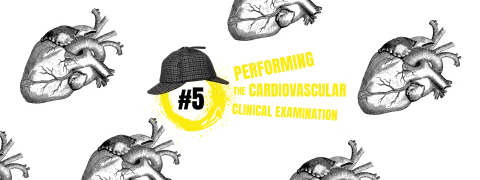
This month, we’ll look at disability-adjusted life years (DALY) and potential years of life lost (PYLL) in Wudland. These results of course are not true results, but they serve as a support to illustrate the language used in presentations.
Dans ce sixième numéro, vous trouverez une nouvelle contribution indiquant la manière de présenter les résultats de votre étude. Aujourd’hui, nous avons ciblé la présentation d’un camembert et d’une courbe. Ce mois-ci, nous allons nous pencher sur les années de vie corrigées de l’incapacité (AVCI) et sur les années potentielles de vie perdues (APVP) à Wudland. Bien sûr, ces résultats ne sont pas de vrais résultats, mais nous les utilisons pour illustrer ce qui est dit lors de communications orales.
Disability-adjusted life years in men in Wudland for 2013 - cut-off 80 years
This pie chart shows the disability-adjusted life years or DALY for Wudland in 2013. The DALY provides an estimation of disease burden. It can be considered a combination of years of life lost and years living with disability and can be used to determine health policy priorities, healthcare needs for a given area and the effect of health policy. For this analysis, we’ve chosen a cut-off of 80 years, meaning that a man who lives to age 80 is regarded as having lived a full healthy life. As you can see, cancer and heart disease are responsible for almost half of the years of healthy life lost – at around twenty-five per cent each. The third and fourth leading causes of lost healthy life are mental and neurological disorders at 17% and 15%, respectively. When combined, these two entities become the major cause of loss, thus underlining the burden of such chronic diseases on healthcare resources.
It’s interesting to note that accidents account for only seven per cent of the loss of healthy life.
|
Lexical help disability: handicap disease burden: resources consumed to manage disease health policy: healthcare strategy a cut-off: a limit for statistical purposes leading causes: principal causes underlining: emphasizing account for: represent |

Camembert / Pie chart
| un segment | a segment/portion |
| une aire / une surface | an area |
| hachuré | hatched |
| en croisillons / quadrillé | cross-hatched |
| hachures | hatching/shadings |
| hachures croisées | cross-hatching |
| bandes / rayures | stripes |
| gris clair | light grey |
| gris foncé | dark grey |
| en grisé | shaded |
| groupés | clustered/grouped together |
| réguliers | regular/regularly spaced |
| harmonieusement répartis | evenly distributed/spaced |
| irréguliers | irregular/irregularly spaced |
| linéaire | linear |
|
Number of PYLL in men x103 in Wudland (pop: 22.6 million) for cut-off of 80 years
|
In comparison, this graph shows the evolution of only one component of the DALY, potential years of life lost or PYLL, for Wudland between 1995 and 2010. Again, we used a cut-off of 80 years for this analysis. First of all, it’s interesting to note that accidents accounted for a major proportion of PYLL, which contrasts sharply with the DALY figures. This is because serious accidents often occur in young people and often result in death, in road traffic accidents, for example. This leads to a large number of lost years of life, but a relatively small disease burden compared with heart disease or cancer, for example.
Another interesting point shown by this graph is that years lost due to heart disease and cancer have fallen considerably since 1995. This is probably due to widespread screening, which has led to cancer detection at earlier stages and more effective therapy. More and more cancer patients are therefore living longer. As for heart disease, the fall is probably due to greater awareness of risk factors thanks to reinforced prevention campaigns since 1995, better secondary prevention, a more rapid response by the A & E services, and since 2007, the installation of automatic defibrillators in strategic places. However, more studies are needed to confirm these hypotheses.
|
Lexical help component: element figures: numbers, data leads to: results in widespread: generalised screening: investigation at earlier stages: before the cancer is advanced awareness: knowledge A & E services: accident and emergency services in GB |

Courbe / Line graph
| un schéma simplifié | a diagram |
| un dessin | a drawing |
| une ligne droite | a straight line |
| une ligne courbe | a curved line |
| une ligne brisée | a broken line |
| une ligne continue | a solid/full/plain line. |
| une ligne discontinue | a dashed line |
| une ligne en pointillés | a dotted line |
| une ligne en dents de scie | a saw-toothed line |
| un trait épais | a thick line |
| un trait fin | a thin line |
| un double trait | a double line |
| un cercle plein | a full circle |
| un cercle vide | an open circle |
| une croix | a cross |
| un triangle | a triangle |
| un carré | a square |
| un point | a dot |
| un tiret | a dash |
| une flèche | an arrow |
| un sommet / pic | a peak |
| une série de pics / points élevés | a series of peaks/high points |
Click on the following links to watch two short videos:
Cliquer sur les liens suivant pour voir deux courtes vidéos :
Résultats 3
Résultats 4
*Professeurs d'anglais médical à l'université de Dijon













